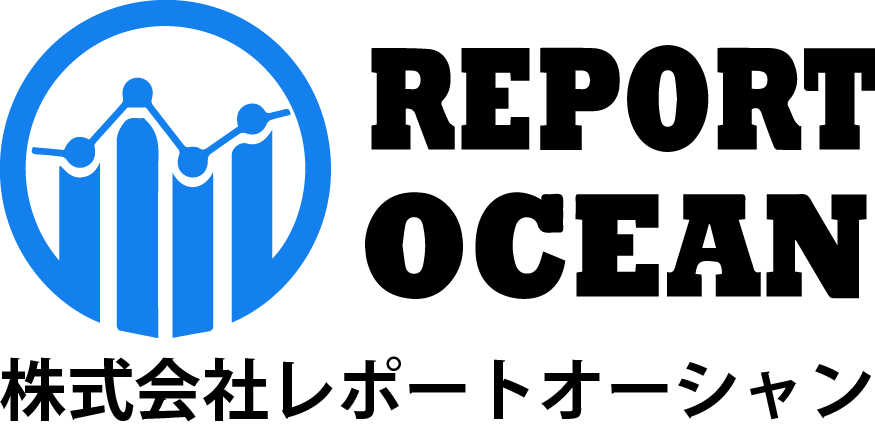日本ポリオレフィン市場規模、シェア、競争環境、動向分析レポート:タイプ別(ポリエチレン、ポリプロピレン、ポリオレフィンエラストマー、エチレン酢酸ビニル、ポリブチレン、ポリメチルペンテン、その他)、プロセス別(ブロー成形、射出成形、その他)、形態別(固体、液体)、 用途別(包装、輸送部品、ガス及び圧力パイプ、繊維製品、接着剤及びシーリング剤、医療機器、その他)、エンドユーザー産業別(建築及び建設、輸送、電気及び電子、食品及び飲料、農業、レジャー及びおもちゃ、繊維、健康管理、その他): 2024 年から 2032 年までの機会分析と業界予測
レポートID : ROJP0524093 |
最終更新 : 2024年05月 |
フォーマット : ![]() :
: ![]() :
: ![]()
Table of Contents
1. Research Methodology
2. Project Scope & Definitions
3. Impact of COVID-19 on Japan Polyolefins Market
4. Impact of Russia-Ukraine War
5. Executive Summary
6. Voice of Customer
6.1. Market Awareness and Product Information
6.2. Brand Awareness and Loyalty
6.3. Factors Considered in Purchase Decision
6.3.1.Brand Name
6.3.2.Quality
6.3.3.Quantity
6.3.4.Price
6.3.5.Product Specification
6.3.6.Application Specification
6.3.7.Shelf-Life
6.3.8.Availability of Product
6.4. Frequency of Purchase
6.5. Medium of Purchase
7. Japan Polyolefins Market Outlook, 2017-2031
7.1. Market Size & Forecast
7.1.1.By Value
7.1.2.By Volume
7.2. By Type
7.2.1.Polyethylene (PE)
7.2.1.1. Low-density Polyethylene (LDP)
7.2.1.2. High-density Polyethylene (HDP)
7.2.1.3. Linear Low-density Polyethylene (LLDP)
7.2.1.4. Cross-linked Polyethylene (XLPE)
7.2.2.Polypropylene (PP)
7.2.3.Polyolefin Elastomer (POE)
7.2.4.Ethylene Vinyl Acetate (EVA)
7.2.5.Polybutylene (PB)
7.2.6.Polymethylpentene (PMP)
7.2.7.Others
7.3. By Process
7.3.1.Blow Molding
7.3.2.Injection Molding
7.3.3.Others
7.4. By Form
7.4.1.Solid
7.4.2.Liquid
7.5. By Application
7.5.1.Packaging
7.5.1.1. Containers & Crates
7.5.1.2. Films
7.5.1.3. Bottles
7.5.1.4. Carrier Bags
7.5.1.5. Drums
7.5.1.6. Others
7.5.2.Transport Components & Parts
7.5.3.Gas & Pressure Pipes
7.5.4.Textile Products
7.5.5.Adhesives & Sealants
7.5.6.Medical Equipment
7.5.7.Others
7.6. By End-use Industry
7.6.1.Building & Construction
7.6.1.1. Residential
7.6.1.2. Commercial
7.6.1.3. Industrial
7.6.1.4. Infrastructure
7.6.2.Transport
7.6.2.1. Automotive
7.6.2.1.1. Passenger Vehicles (PV)
7.6.2.1.2. Light Commercial Vehicles (LCV)
7.6.2.1.3. Heavy Commercial Vehicles (HCV)
7.6.2.2. Aerospace
7.6.2.2.1. Passenger
7.6.2.2.2. Commercial
7.6.2.2.3. Defense
7.6.2.3. Marine
7.6.2.3.1. Cargo Vessels
7.6.2.3.2. Passenger Vessels
7.6.2.3.3. Others
7.6.2.4. Locomotive
7.6.3.Electrical & Electronics
7.6.3.1. Semiconductor
7.6.3.2. Printed Circuit Board (PCB)
7.6.3.3. Smartphones
7.6.3.4. Laptops
7.6.3.5. Others
7.6.4.Food & Beverage
7.6.4.1. Vegetables & Fruits
7.6.4.2. Bakery Products
7.6.4.3. Dairy Products
7.6.4.4. Chocolate & Confectioneries
7.6.4.5. Meat & Fish
7.6.4.6. Alcoholic Beverages
7.6.4.7. Non-alcoholic Beverages
7.6.4.8. Others
7.6.5.Agriculture
7.6.6.Leisure & Toys
7.6.7.Textile
7.6.8.Healthcare
7.6.9.Others
7.7. By Region
7.7.1.North
7.7.2.Central
7.7.3.South
8. Supply Side Analysis
8.1. Capacity, By Company
8.2. Production, By Company
8.3. Operating Efficiency, By Company
8.4. Key Plant Locations (Up to 25)
9. Market Mapping, FY2023
9.1. By Type
9.2. By Process
9.3. By Form
9.4. By Application
9.5. By End-use Industry
9.6. By Region
10. Macro Environment and Industry Structure
10.1. Supply Demand Analysis
10.2. Import Export Analysis – Volume and Value
10.3. Supply/Value Chain Analysis
10.4. PESTEL Analysis
10.4.1. Political Factors
10.4.2. Economic System
10.4.3. Social Implications
10.4.4. Technological Advancements
10.4.5. Environmental Impacts
10.4.6. Legal Compliances and Regulatory Policies (Statutory Bodies Included)
10.5. Porter’s Five Forces Analysis
10.5.1. Supplier Power
10.5.2. Buyer Power
10.5.3. Substitution Threat
10.5.4. Threat from New Entrant
10.5.5. Competitive Rivalry
11. Market Dynamics
11.1. Growth Drivers
11.2. Growth Inhibitors (Challenges, Restraints)
12. Key Players Landscape
12.1. Competition Matrix of Top Five Market Leaders
12.2. Market Revenue Analysis of Top Five Market Leaders (in %, FY2023)
12.3. Mergers and Acquisitions/Joint Ventures (If Applicable)
12.4. SWOT Analysis (For Five Market Players)
12.5. Patent Analysis (If Applicable)
13. Pricing Analysis
14. Case Studies
15. Key Players Outlook
15.1. Mitsubishi Chemical Group Corporation
15.1.1. Company Details
15.1.2. Key Management Personnel
15.1.3. Products & Services
15.1.4. Financials (As reported)
15.1.5. Key Market Focus & Geographical Presence
15.1.6. Recent Developments
15.2. Mitsui Chemicals, Inc.
15.3. Sumitomo Chemical Co., Ltd.
15.4. INABATA & Co., Ltd.
15.5. SEKISUI CHEMICAL CO., LTD.
15.6. Chevron Phillips Chemical Company LLC.
15.7. LG Chem
15.8. Dow
15.9. LyondellBasell Industries Holdings B.V.
15.10. Exxon Mobil Corporation.
16. Strategic Recommendations
17. About Us & Disclaimer
無料サンプルを入手する ![]()
この無料サンプルには、トレンド分析から推定・予測まで、さまざまなデータが含まれています。
最新レポート
お問い合わせ
-
- JAPAN : 03-6899-2648
-
- EMAIL : [email protected]







